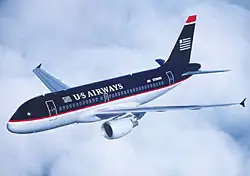
Last week, the U.S. Department of Justice essentially caved on its attempt to block the merger between American Airlines and US Airways. It extracted a few face-saving concessions, declared victory and then folded its tent. The merger will now almost certainly proceed. Corporate arrangements will be complete by the end of the year, but real integration into a single airline will take months or even years. Although it’s still early, you can pretty well identify the winners and losers.
The big winners are businesses, not consumers:
- JetBlue, Southwest, Virgin America, and a few other lines will be able to add flights to key cities: Quite a few at Washington’s Reagan National Airport, a few at New York/LaGuardia, and a smattering at Boston, Chicago/O’Hare, Dallas/Love Field, Los Angeles, and Miami.
- American’s creditors will wind up owning 70 percent of an airline that, even pre-merger, is making good profits.
- The deal-maker banks, lawyers, and consultants who have already reaped millions on the merger will add more.
- A few large businesses that like to contract almost all of their employees’ flying on a single airline will find that the combined line can offer wider scope than either line, separately.
- Remaining giant airlines will enjoy reduced competition.
Clearly, however, except for improved competition at a few airports, those wins translate directly into losses for most consumers:
- The only consumer winners: Those who live in or visit Washington, D.C., will likely enjoy some new services. Otherwise, it’s all bad.
- The remaining “big four” lines—American, Delta, Southwest, and United—will find it easier to raise fares, resist fare cuts, add fees, and devalue frequent-flyer programs. No matter how the apologists try to rationalize it, the deal will lead to higher fares. In fact, that outcome is one of the big, if unheralded, reasons for the merger in the first place.
- Top management of the new American will come largely from US Airways, and that’s bad for consumers. US Airways is an unexceptional airline in all facets of the business, and it has been much less innovative than the old American. Old American pioneered a new fare-bundling system that offers good deals on checked baggage and ticket changes, for example, and it has moved to install an extra-legroom option in Economy class; US Airways has done neither.
- Despite some initial limits, it’s hard to see how the combined line can avoid downsizing at least some of its current total of eight hubs, with loss of service for consumers who live in or visit those areas and loss of jobs. Eight is too many for the long haul.
- Also, despite some initial limits, travelers between Washington, D.C., and smaller cities will face reductions in service, tempered only by the fact that Congress members really want to be able to fly between their home states/districts from Reagan National Airport.
The new American has already announced that it will remain with American’s current alliance, Oneworld, and drop US Airways’ Star Alliance membership. Overall, Oneworld is the weaker alliance, but American’s transatlantic deal with British Airways is far too important to warrant a change of alliances. Oneworld is especially weak from the United States to Europe, other than the U.K., and British Airways is extremely unfriendly to its own and Oneworld frequent flyers.
Neither American nor US Airways joined in the recent trend to devalue frequent-flyer miles, but you can expect devaluation fairly quickly. Some observers predict that the new line will go toward a completely new system, with credit earning keyed to how much you spend rather than how many miles you log and awards keyed to ticket costs. I’m not so sure, but at the end of the day you can count on a less generous program, one way or another. Whatever happens, however, the new line will probably give current US Airways frequent flyers some latitude to remain with Star Alliance, at least for a while.
All in all, the merger is good for business, bad for consumers. You were expecting maybe something different?
Ed Perkins on Travel is copyright (c) 2013 Tribune Media Services, Inc.
You Might Also Like:
We hand-pick everything we recommend and select items through testing and reviews. Some products are sent to us free of charge with no incentive to offer a favorable review. We offer our unbiased opinions and do not accept compensation to review products. All items are in stock and prices are accurate at the time of publication. If you buy something through our links, we may earn a commission.
Related
Top Fares From
Today's Top Travel Deals
Brought to you by ShermansTravel
France: 8-Night Paris, Avignon & Nice...
Infinity Worldwide Vacations
 vacation
$2880+
vacation
$2880+
Poconos: 3 Nts in Garden of...
ResortsAndLodges.com
 hotel
$305+
hotel
$305+
7-Nt Canada & New England Cruise,...
Princess Cruises
 cruise
$839+
cruise
$839+



